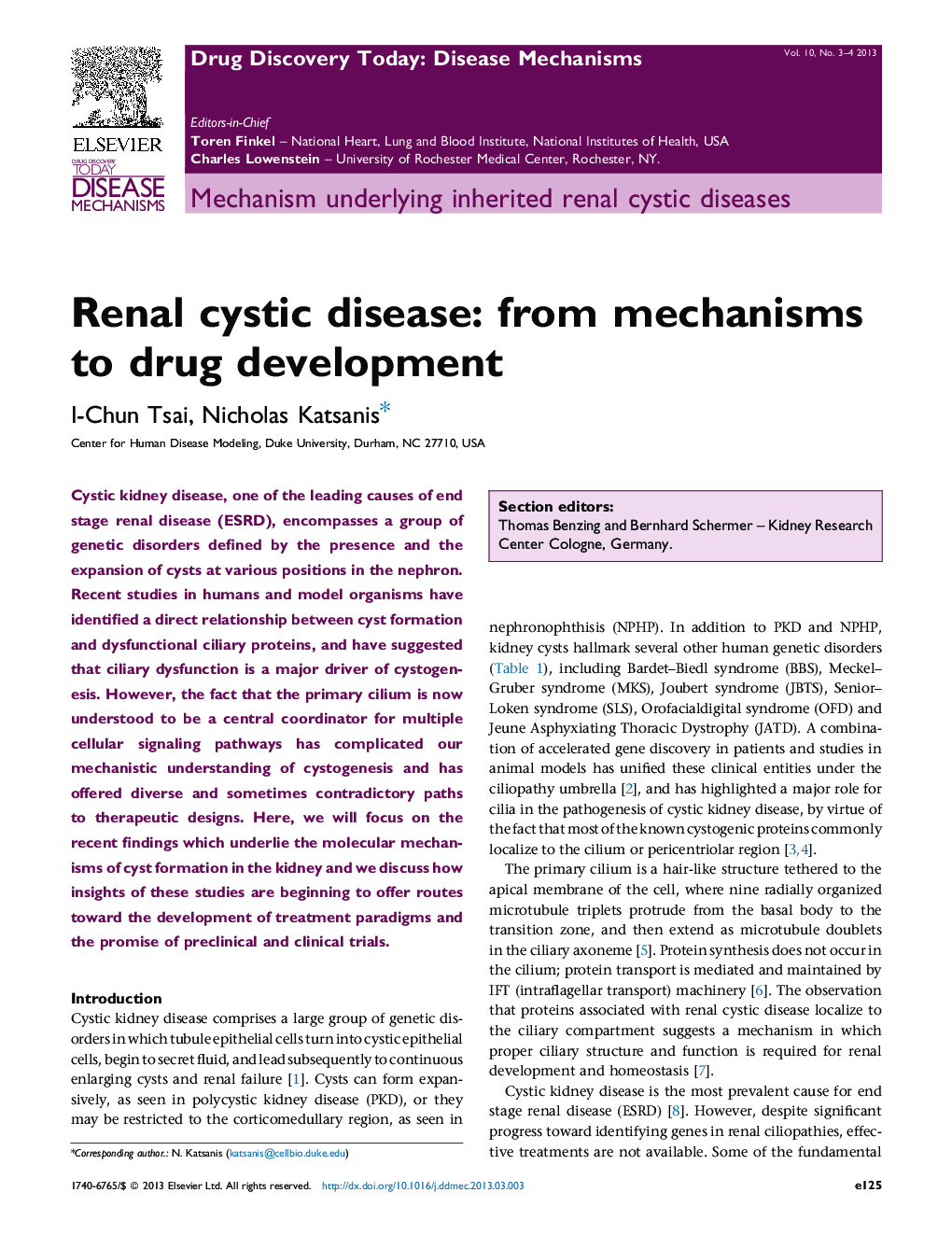| Article ID | Journal | Published Year | Pages | File Type |
|---|---|---|---|---|
| 2081715 | Drug Discovery Today: Disease Mechanisms | 2013 | 9 Pages |
Cystic kidney disease, one of the leading causes of end stage renal disease (ESRD), encompasses a group of genetic disorders defined by the presence and the expansion of cysts at various positions in the nephron. Recent studies in humans and model organisms have identified a direct relationship between cyst formation and dysfunctional ciliary proteins, and have suggested that ciliary dysfunction is a major driver of cystogenesis. However, the fact that the primary cilium is now understood to be a central coordinator for multiple cellular signaling pathways has complicated our mechanistic understanding of cystogenesis and has offered diverse and sometimes contradictory paths to therapeutic designs. Here, we will focus on the recent findings which underlie the molecular mechanisms of cyst formation in the kidney and we discuss how insights of these studies are beginning to offer routes toward the development of treatment paradigms and the promise of preclinical and clinical trials.
